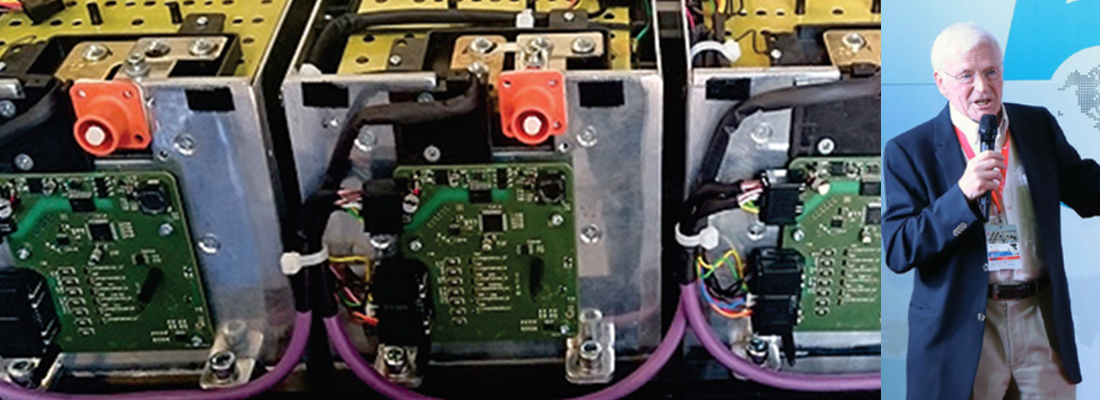Data gathering & IoT in the remanufacturing field – part one
After the success achieved in recent days, on the occasion of Rematec Amsterdam 2025, our news returns addressing the topic of Data gathering & IoT in the remanufacturing field. In this first part we will talk about data gathering, what it is and how it affects remanufacturing.
In the automotive remanufacturing industry, data gathering serves as a strategic enabler for efficiency, quality assurance, and sustainability. The process begins at the earliest stage—core collection—where returned parts (often engines, transmissions, alternators, and other high-value components) are evaluated to determine their suitability for remanufacturing. Key data such as mileage, failure type, manufacturer specifications, and general condition are recorded. This information not only informs the decision on whether a core should be reused or scrapped but also aids in forecasting demand, managing reverse logistics, and optimizing inventory levels. Once cores enter the disassembly phase, data continues to be collected regarding component wear, corrosion, damage patterns, and material degradation. This is often supported by visual inspections, digital imaging, and the use of diagnostic equipment to document precise conditions and failure modes. Such data is crucial for root-cause analysis and helps improve future designs and remanufacturing techniques. During the cleaning and testing phase, data gathering becomes even more critical. Here, non-destructive testing methods—such as ultrasonic, eddy current, and magnetic particle inspections—are employed to evaluate structural integrity. Residual contaminant levels, dimensional tolerances, and surface finish quality are also measured and logged. These values are benchmarked against original equipment manufacturer (OEM) standards to determine whether the part can be reconditioned or must be replaced. As components move into remanufacturing and reassembly, precise technical data is captured and tracked, including machining tolerances, pressure levels, torque specifications, and the types of materials or coatings used during refurbishment. This ensures repeatability and compliance across batches and minimizes the variation between remanufactured units. At the final testing stage, performance data such as temperature profiles, hydraulic pressure readings, emission levels, voltage stability, and noise-vibration-harshness (NVH) metrics are collected using advanced diagnostic tools. This testing validates that each remanufactured unit meets or exceeds the functional standards of a new part. Data collection does not stop at the factory door—field data, such as warranty claims, user feedback, and real-world performance metrics, are also gathered post-sale to further refine quality control processes and support continuous improvement initiatives.
The integration of IoT, AI and ML
To enable such a complex data ecosystem, modern remanufacturing operations increasingly rely on a combination of Internet of Things (IoT) sensors, RFID technology, machine vision systems, cloud-based data platforms, and enterprise resource planning (ERP) software. These tools facilitate real-time tracking of components, process automation, predictive maintenance, and long-term traceability. The integration of artificial intelligence (AI) and machine learning (ML) further enhances the ability to detect patterns, predict component lifespan, and optimize workflows. However, despite these advancements, several challenges persist. Data standardization remains a significant issue, especially when dealing with components from multiple manufacturers, model years, and regions. Integrating data across legacy systems, ensuring cybersecurity, and managing the volume and complexity of collected information are ongoing concerns. Additionally, smaller remanufacturers may face financial and technical barriers to implementing high-end data systems. Nonetheless, the benefits are substantial. Robust data collection supports compliance with environmental regulations, improves resource efficiency, reduces waste, enhances customer trust, and contributes to the broader goals of the circular economy by extending the life of valuable automotive components. As the industry evolves, data will increasingly act not only as a record-keeping tool but as a central driver of decision-making, innovation, and sustainable manufacturing practices.
Data Gathering in the BEVs
As Battery Electric Vehicles (BEVs) gain traction in the automotive market, their remanufacturing presents new complexities that require advanced data gathering techniques. Unlike traditional internal combustion engine vehicles, BEVs are built around high-voltage battery systems, electric drivetrains, and embedded software, all of which demand precise evaluation through data-driven approaches during the remanufacturing process. A central component of BEV remanufacturing is the battery pack. The Battery Management System (BMS) offers valuable diagnostic data, including state-of-charge (SOC), state-of-health (SOH), cycle count, voltage and temperature variations, and cell-level discrepancies. This data is critical for determining whether a battery should be refurbished, repurposed, or recycled. Similarly, components such as electric motors, inverters, and control modules require functional testing and analysis based on parameters like thermal load history, insulation resistance, fault codes, and power efficiency. Software plays a pivotal role in BEVs, making it essential to extract and assess data such as firmware versions, communication errors (CAN bus logs), and diagnostic trouble codes (DTCs). In many cases, software must be updated or reset to restore the remanufactured component to operational standards. This requires secure access to OEM-specific data and tools, which can be a challenge due to proprietary systems and encryption.





